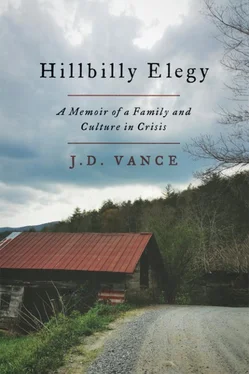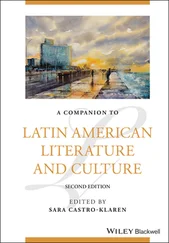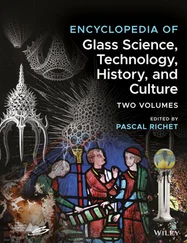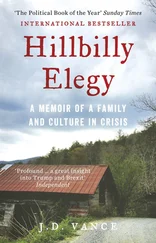1 ...8 9 10 12 13 14 ...54 Today downtown Middletown is little more than a relic of American industrial glory. Abandoned shops with broken windows line the heart of downtown, where Central Avenue and Main Street meet. Richie’s pawnshop has long since closed, though a hideous yellow and green sign still marks the site, so far as I know. Richie’s isn’t far from an old pharmacy that, in its heyday, had a soda bar and served root beer floats. Across the street is a building that looks like a theater, with one of those giant triangular signs that reads “ST___L” because the letters in the middle were shattered and never replaced. If you need a payday lender or a cash-for-gold store, downtown Middletown is the place to be.
Not far from the main drag of empty shops and boarded-up windows is the Sorg Mansion. The Sorgs, a powerful and wealthy industrial family dating back to the nineteenth century, operated a large paper mill in Middletown. They donated enough money to put their names on the local opera house and helped build Middletown into a respectable enough city to attract Armco. Their mansion, a gigantic manor home, sits near a formerly proud Middletown country club. Despite its beauty, a Maryland couple recently purchased the mansion for $225,000, or about half of what a decent multi-room apartment sets you back in Washington, D.C.
Located quite literally on Main Street, the Sorg Mansion is just up the road from a number of opulent homes that housed Middletown’s wealthy in their heyday. Most have fallen into disrepair. Those that haven’t have been subdivided into small apartments for Middletown’s poorest residents. A street that was once the pride of Middletown today serves as a meeting spot for druggies and dealers. Main Street is now the place you avoid after dark.
This change is a symptom of a new economic reality: rising residential segregation. The number of working-class whites in high-poverty neighborhoods is growing. In 1970, 25 percent of white children lived in a neighborhood with poverty rates above 10 percent. In 2000, that number was 40 percent. It’s almost certainly even higher today. As a 2011 Brookings Institution study found, “compared to 2000, residents of extreme-poverty neighborhoods in 2005–09 were more likely to be white, native-born, high school or college graduates, homeowners, and not receiving public assistance.” [12] Elizabeth Kneebone, Carey Nadeau, and Alan Berube, “The Re-Emergence of Concentrated Poverty: Metropolitan Trends in the 2000s,” Brookings Institution (November 2011), http://www.brookings.edu/research/papers/2011/11/03-poverty-kneebone-nadeau-berube .
In other words, bad neighborhoods no longer plague only urban ghettos; the bad neighborhoods have spread to the suburbs.
This has occurred for complicated reasons. Federal housing policy has actively encouraged homeownership, from Jimmy Carter’s Community Reinvestment Act to George W. Bush’s ownership society. But in the Middletowns of the world, homeownership comes at a steep social cost: As jobs disappear in a given area, declining home values trap people in certain neighborhoods. Even if you’d like to move, you can’t, because the bottom has fallen out of the market—you now owe more than any buyer is willing to pay. The costs of moving are so high that many people stay put. Of course, the people trapped are usually those with the least money; those who can afford to leave do so.
City leaders have tried in vain to revive Middletown’s downtown. You’ll find their most infamous effort if you follow Central Avenue to its end point on the banks of the Miami River, once a lovely place. For reasons I can’t begin to fathom, the city’s brain trust decided to turn our beautiful riverfront into Lake Middletown, an infrastructural project that apparently involved shoveling tons of dirt into the river and hoping something interesting would come of it. It accomplished nothing, though the river now features a man-made dirt island about the size of a city block.
Efforts to reinvent downtown Middletown always struck me as futile. People didn’t leave because our downtown lacked trendy cultural amenities. The trendy cultural amenities left because there weren’t enough consumers in Middletown to support them. And why weren’t there enough well-paying consumers? Because there weren’t enough jobs to employ those consumers. Downtown Middletown’s struggles were a symptom of everything else happening to Middletown’s people, especially the collapsing importance of Armco Kawasaki Steel.
AK Steel is the result of a 1989 merger between Armco Steel and Kawasaki—the same Japanese corporation that makes those small high-powered motorcycles (“crotch rockets,” we called them as kids). Most people still call it Armco for two reasons. The first is that, as Mamaw used to say, “Armco built this fucking town.” She wasn’t lying: Many of the city’s best parks and facilities were bought with Armco dollars. Armco’s people sat on the boards of many of the important local organizations, and it helped to fund the schools. And it employed thousands of Middletonians who, like my grandfather, earned a good wage despite a lack of formal education.
Armco earned its reputation through careful design. “Until the 1950s,” writes Chad Berry in his book Southern Migrants, Northern Exiles , “the ‘big four’ employers of the Miami Valley region—Procter and Gamble in Cincinnati, Champion Paper and Fiber in Hamilton, Armco Steel in Middletown, and National Cash Register in Dayton—had had serene labor relations, partly because they … [hired] family and friends of employees who were once migrants themselves. For example, Inland Container, in Middletown, had 220 Kentuckyians on its payroll, 117 of whom were from Wolfe County alone.” While labor relations no doubt had declined by the 1980s, much of the goodwill built by Armco (and similar companies) remained.
The other reason most still call it Armco is that Kawasaki was a Japanese company, and in a town full of World War II vets and their families, you’d have thought that General Tojo himself had decided to set up shop in southwest Ohio when the merger was announced. The opposition was mostly a bunch of noise. Even Papaw—who once promised he’d disown his children if they bought a Japanese car—stopped complaining a few days after they announced the merger. “The truth is,” he told me, “that the Japanese are our friends now. If we end up fighting any of those countries, it’ll be the goddamned Chinese.”
The Kawasaki merger represented an inconvenient truth: Manufacturing in America was a tough business in the post-globalization world. If companies like Armco were going to survive, they would have to retool. Kawasaki gave Armco a chance, and Middletown’s flagship company probably would not have survived without it.
Growing up, my friends and I had no clue that the world had changed. Papaw had retired only a few years earlier, owned stock in Armco, and had a lucrative pension. Armco Park remained the nicest, most exclusive recreation spot in town, and access to the private park was a status symbol: It meant that your dad (or grandpa) was a man with a respected job. It never occurred to me that Armco wouldn’t be around forever, funding scholarships, building parks, and throwing free concerts.
Still, few of my friends had ambitions to work there. As small children, we had the same dreams that other kids did; we wanted to be astronauts or football players or action heroes. I wanted to be a professional puppy-player-wither, which at the time seemed eminently reasonable. By the sixth grade, we wanted to be veterinarians or doctors or preachers or businessmen. But not steelworkers. Even at Roosevelt Elementary—where, thanks to Middletown geography, most people’s parents lacked a college education—no one wanted to have a blue-collar career and its promise of a respectable middle-class life. We never considered that we’d be lucky to land a job at Armco; we took Armco for granted.
Читать дальше
Конец ознакомительного отрывка
Купить книгу




![Джей Вэнс - Элегия Хиллбилли [litres]](/books/399146/dzhej-vens-elegiya-hillbilli-litres-thumb.webp)







